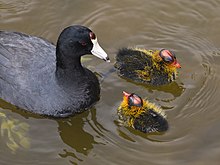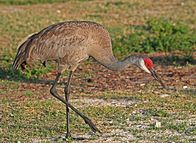 O
O
- Bird watching develops patience. …
- Bird watching will get your children to go outside. …
- Bird watching allows for introspection and contemplation. …
- Bird watching can improve cardiovascular health. …
- Bird watching gives you an excuse to travel. …
- Bird watching builds a sense of community. …
- Bird watching quickens reflexes.
One of my favorites, The mourning dove is a member of the dove family, Columbidae. The bird is also known as the American mourning dove or the rain dove, and erroneously as the turtle dove, and was once known as the Carolina pigeon or Carolina turtledove. It is one of the most abundant and widespread of all North American birds. It is also a leading gamebird, with more than 20 million birds (up to 70 million in some years) shot annually in the U.S., both for sport and for meat. Its ability to sustain its population under such pressure is due to its prolific breeding; in warm areas, one pair may raise up to six broods of two young each in a single year. The wings make an unusual whistling sound upon take-off and landing, a form of sonation. The bird is a strong flier, capable of speeds up to 88 km/h (55 mph). It is the national bird of the British Virgin Islands.
Mourning doves are light grey and brown and generally muted in color. Males and females are similar in appearance. The species is generally monogamous, with two squabs (young) per brood. Both parents incubate and care for the young. Mourning doves eat almost exclusively seeds, but the young are fed crop milk by their parents.

Yellow rail adults have brown upperparts streaked with black, a yellowish-brown breast, a light belly and barred flanks. The short thick dark bill turns yellow in males during the breeding season. The feathers on the back are edged with white. There is a yellow-brown band over the eye and the legs are greenish-yellow.

Love the Sandhill Crane! A species of large cranes of North America and extreme northeastern Siberia. The common name of this bird refers to habitat like that at the Platte River, on the edge of Nebraska’s Sandhills on the American Plains. This is the most important stopover area for the nominotypical subspecies, the lesser sandhill crane (Antigone canadensis canadensis), with up to 450,000 of these birds migrating through annually. (wiki)

Here are some good resources if you like birding:



Bird watching makes me happy….
LikeLiked by 1 person
Insightful post with great shots. Thanks for sharing 😊
LikeLiked by 1 person